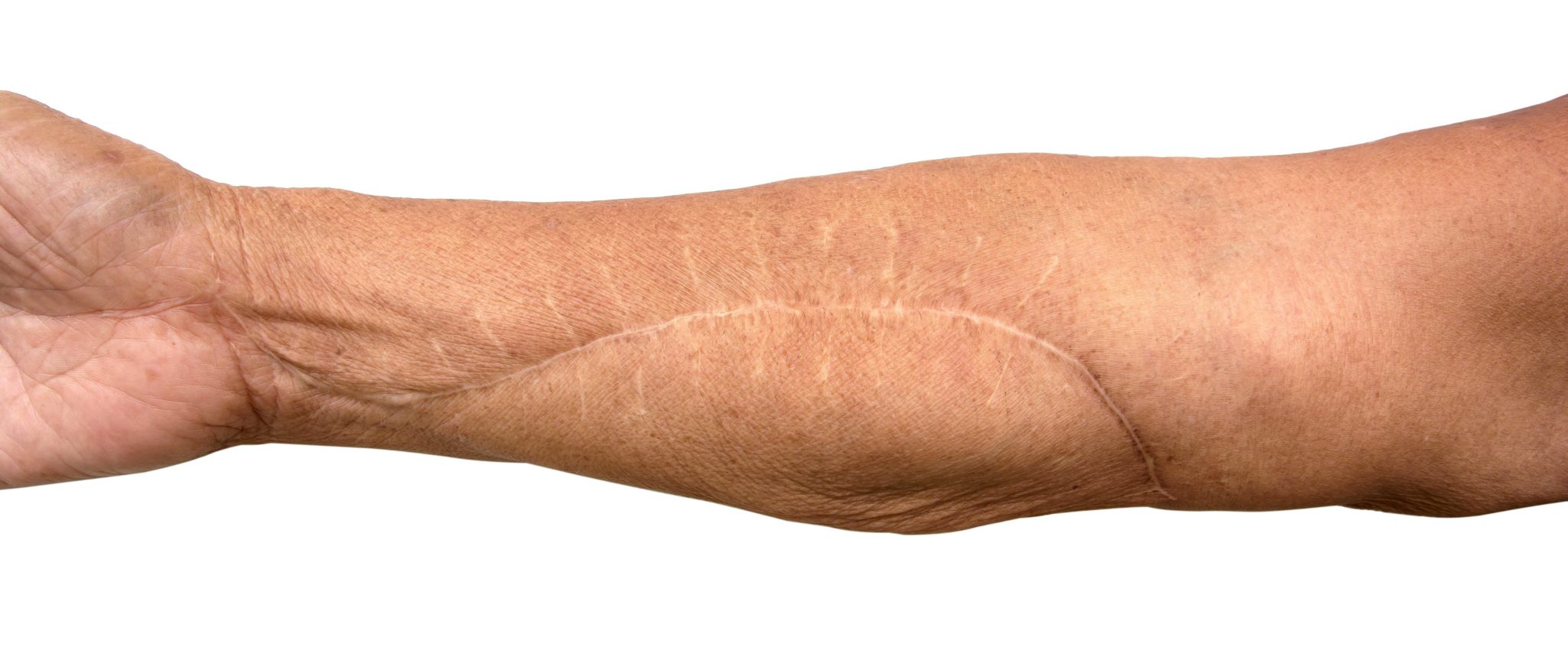There is no formula for determining whether a scar will be severe or mild, or how well a scar will respond to treatment. Many factors affect the way a scar develops, including the type of wound, its direction, the supply of blood to the area, the thickness and color of your skin, and the particulars of how the wound heals.

How Soon Should You Get Scar Revision Following Getting a Scar?
Scar revision looks different for every patient. The process must begin with a consultation in which the surgeon can carefully evaluate the scar, including its location and type. After this examination, doctor and patient can develop a plan that involves the most suitable method of treatment at the right time. It may feel frustrating to hear that a doctor advises waiting to treat a scar, especially if it is causing some degree of disfigurement. When a surgeon recommends postponing scar revision surgery, they explain exactly why, and it nearly always has to do with healing. Either they need to see how much the scar will heal on its own or they need to postpone treatment in order to prevent a more significant issue with scarring. When scar revision is performed too soon, there is a risk for poor results or hypertrophy, both of which contradict the reason to seek scar treatment in the first place.
Is Scar Revision Painful?
No. Scar revision procedures are performed with an appropriate anesthetic. Often, this involves a topical numbing cream and/or injections of a local anesthetic that completely numbs the upper layers of tissue in which the doctor will perform surgical repair. Depending on the type of scar revision the patient may receive prescription pain medication to take after their procedure. This may be especially relevant to instances of skin grafting and flap surgery. For more conservative procedures, the doctor will provide post-treatment care instructions that minimize the risk of infection and poor healing and maximize comfort.
How Can I Prepare for Scar Revision?
Pre-treatment recommendations will depend on the procedure that is scheduled. Instructions are provided well in advance of more complex scar revision procedures so the patient has ample time to prepare. Some of the guidelines that may be included in pre-treatment instructions include:
- Lifestyle modifications. Patients who smoke are advised to quit at least four weeks before surgery. This is an important instruction to follow because smoking causes the blood vessels to narrow, which deprives tissue of oxygenation. If a patient does not stop smoking far enough in advance, their scar revision is not likely to heal as well as it could.
- Check medications. When consulting with a doctor about scar revision, it is imperative to discuss all medications and supplements that are taken, including topical solutions like Retin-A or acne medication. Some may need to be stopped temporarily to maximize wound healing and reduce the risk of bleeding.
- Patients are advised to dress comfortably for their scar revision appointment. Procedures that are performed in the hospital may involve an overnight stay. Patients should leave jewelry at home.
- Diet modifications. Depending on the type of anesthesia that is planned, patients may be advised to fast for six or more hours before their procedure.
- If sedation or general anesthesia is planned, the patient will need to arrange a ride home. Even when local anesthesia is planned, patients may feel more comfortable having a loved one drive them home.
How Long Does it Take to Heal from Scar Revision Surgery?
There are three phases of healing after scar revision surgery.
The inflammatory phase occurs during the first one to two weeks after the procedure. During this initial phase, side effects like wound discoloration, localized swelling, and discomfort are common. It is important to carefully follow the aftercare instructions during this time to prevent infection and poor wound healing. The surgical wound must be kept clean and must be dressed with sterile, breathable bandages so moisture does not build up against the new scar.
The transitional phase begins two to three weeks after surgery and continues for six to twelve weeks. During this stage of healing, the collagen matrix around the treatment area begins to reorganize with new collagen. To promote optimal healing, the patient may be advised to apply special hydrating dressings or silicone sheeting. It is helpful to eat a well-balanced diet that includes lean protein for collagen production and synthesis. Smoking should be strictly avoided due to the inhibition it causes in circulation and the oxygenation of the healing would.
Patients enter the maturation phase of scar revision healing sometime between seven and 12 weeks after their procedure. By that time, there should be very few, if any, steps that are needed to progress healing. In the case of severe scarring, the doctor may recommend the continuation of scar treatments like silicone sheets or oral supplementation to support ongoing tissue regeneration.
Can I Combine Scar Revision with Other Procedures?
In many cases, it is possible to combine scar revision with other procedures to further enhance appearance in some way. If you are interested in addressing cosmetic concerns at the same time as visible scarring, talk to your plastic surgeon to explore the options that may be ideal for you.
Types Of Scars
While no scar can be removed completely, our Rochester, Buffalo, and Syracuse area plastic surgeons can make a scar less noticeable using a variety of techniques. There are many different types of scars, and different treatments, from steroid medications to surgical procedures, that can be highly effective.
There are many different types of scars, differing in thickness and color. The different types of scars include:
Keloid scars are thick masses of scar tissue that grow up outside the original boundaries of a wound. They are frequently itchy and tend to be darker than the skin around them.
Keloid Scars
Acne Scars
Acne scars are caused by severe acne. There are many types of acne scars. Acne scars range from deep pits to scars that have an angular or wavelike appearance.
Hypertrophic Scars
Hypertrophic scars are also thick, red, and raised. Unlike keloids, they remain within the original area of the wound. These scars may improve without medical assistance, though this can take a year or more. Steroid applications or injections can help heal hypertrophic scars.
Contractures
Contractures occur when skin is burned, or in other situations where large areas of skin are lost. The loss of a large area of skin may result in a scar that pulls the edges of the skin together, a process called contraction. The resulting contracture may affect the adjacent muscles and tendons, restricting normal movement. A plastic surgeon may correct a contracture by cutting out the scar and replacing it with a skin graft or a flap.
Scar Treatments
Treatments will differ depending on the type of scar. The treatment we offer for scar removal and revision include:
Steroid Injections
Steroid injections can boost the body’s natural healing processes, helping to heal scars such as keloids and hypertrophic scars.
Z-Plasty
Z-Plasty is a minor surgical procedure to realign a scar so that it sits more in line with natural creases in the skin, thereby making it less noticeable. It can also ease some of the tension that results from contracture scars.

Skin Grafting And Flap Surgery
Skin grafting and flap surgery are very useful for improving the function of a scarred area. They work for particularly large scars such as contractures. A skin graft transfers healthy skin from its original site (the donor site) to an area that has been injured. Skin grafts and flaps involve more serious operations than other forms of scar revision. They are most often performed under general anesthesia as an inpatient procedure in a hospital.
Schedule A Consultation
If you have scars and would like to learn more about possible treatment, contact us at (585) 922-5840 to schedule a consultation. The Plastic Surgery Group of Rochester serves Rochester, Buffalo, Syracuse, and surrounding areas in New York.

